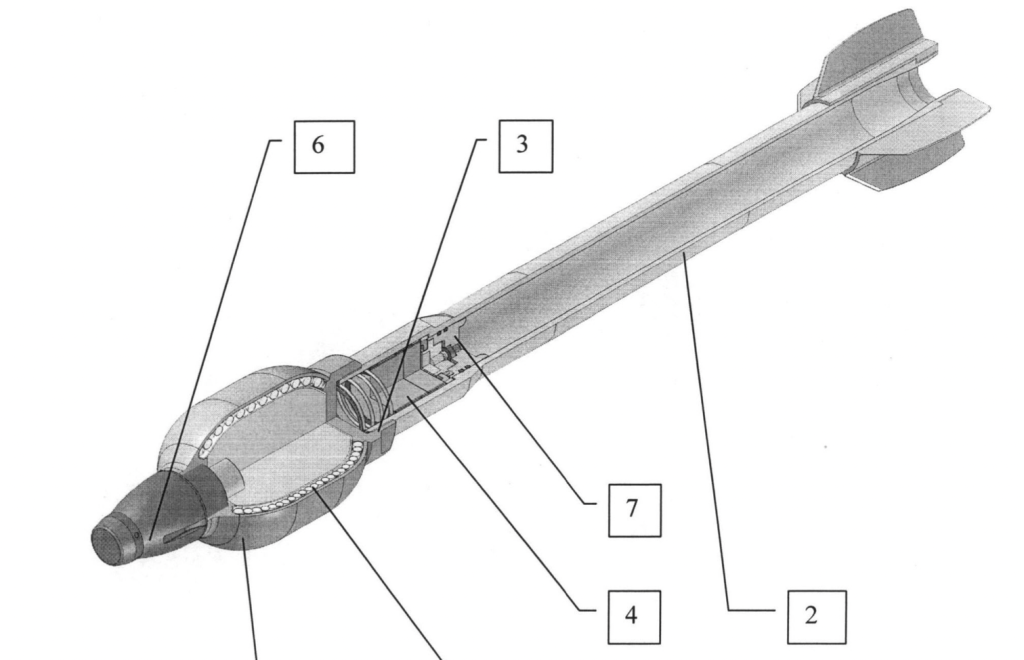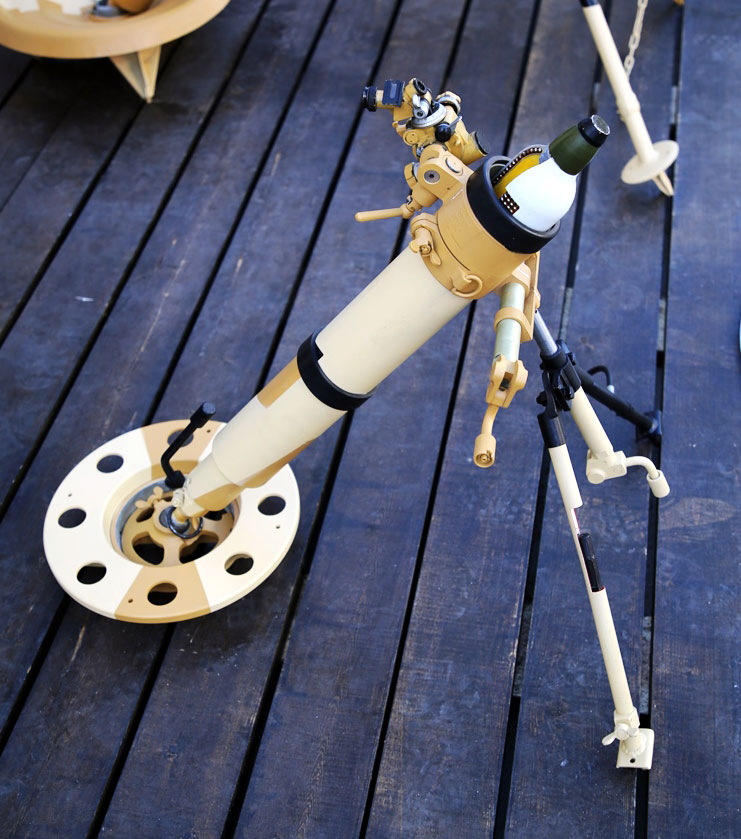Recently there have been a number of defence media articles about Russia’s new ‘silent’ mortar. It’s often described as cutting edge technology but in reality it’s based on technology over 100 years old.
The Russian 2B25 82mm mortar is in fact a spigot mortar. What is a spigot mortar? Unlike a conventional mortar which uses gravity acting on the bomb dropped into the tube striking the anvil or striker at the base of the tube detonating the propellant cartridge in the bomb and launching the mortar bomb. A spigot mortar alters this principle, instead using a spigot or metal rod onto which a bomb with a hollow tail is placed. The bomb’s tail then becomes the element which contains the pressure from the detonated propellant charge rather than the tube as in a conventional mortar. The 2B25’s bomb has a plug at at the base of the propellant cartridge which when fired is pushed down the bomb’s tail tube by the expanding propellant gases – essentially acting as a piston. The plug is prevented from leaving the tube by a constriction at the tube’s end. This captures the gases and reduces the report of the mortar.

Perhaps the most famous spigot mortars are the Blacker Bombard and PIAT (Projector, Infantry, Anti-Tank) of world war two. I wrote a book about the PIAT a couple of years ago so the 2B25 really interests me as a niche application of the same technology!
Spigot mortars have a number of benefits and drawbacks which set them apart from conventional mortars, including a shorter range and slower rate of fire than conventional mortars, but the advantages primarily seized upon is their reduced sound signature and lighter weight. The ignition of the propellant cartridge against the spigot, inside the bomb’s tail tube removes visible flash and is much quieter than a conventional mortar which. The 2B25 optimises this by enclosing the bomb inside a light weight tube to further reduce the visual and audio signatures of the weapon firing even further.
Why is this important and why are ‘silent’ mortars useful? With a reduced signature on the battlefield the chances of effective counter-battery fire are reduced enabling the mortar fire to be more effective and sustained. The developers claim that the 2B25 is about as loud as AK fitted with a PBS-1 suppressor, about 135db, substantially quieter than a standard mortar.
The patent for the 2B25’s bomb, filed in August 2011 and published in February 2013, states:
“proposed shell comprises main part and tail. Tail case accommodates propellant charge and combination piston with initiator. Shell is composed of detachable sealed screw assembly of tail and main part. Tail is furnished with fin. Tail charge chamber accommodates multi-section propellant to be implemented in various versions.”

The 2B25 first began to appear in western media back in 2018 but the design dates back to at least the early 2010s. Developed by the central research institute Burevestnik, it is manned by a two man team and can be transported in a backpack. Officially released data for the mortar suggests it has a maximum range of 1,200 metres with a rate of fire of perhaps 15 rounds per minute. It is reportedly equipped with a standard MPM-44M optical mortar sight.
The mortar appears to be of a fixed spigot design with a firing pin running inside the spigot. This means that unlike the PIAT the 2B25’s spigot does not move. Once the bomb is slid into the mortar tube, down onto the spigot, the operator pulls a handle at the base of the weapon downwards to cock the weapon and then pushing it up to fire it.

The mortar’s baseplate is said to be made of an aluminium alloy with the whole weapon weighing 13kg or 28.6lbs. The mortar’s 3VO35 bomb itself weights 3.3kg and has a 1.9kg warhead.
Both Russian and western media reports have stated that the weapon has been delivered to the Russian armed forces with some suggesting it was in use by “special-purpose units”, possibly Spetsnaz
The 2B25 certainly isn’t the only modern spigot mortar in service, others include the Fly-K from Rheinmetall. Personally, I find it fascinating that spigot-based weapons still have a place on the battlefield, albeit a niche one.
If you enjoyed this video and article please consider supporting our work here. We have some great perks available for Patreon Supporters – including custom stickers and early access to videos! Thank you for your support!
Bibliography:
82mm 2B25 Mortar, CRI Burevstnik, (source)
Mortar Silent Shot, Russian Patent, RU2494337, 16 Aug. 2011, (source)
Mortar 2B25 “Gall” No noise and flash, TopWar, 26 Sept. 2018, (source)
Advanced Silent Mortars Start Arriving for Russian Army, Tass, 7 May 2019, (source)
Russian-made 2B25 “Gull” Silent Mortar will be Modernized in the Imminent Future, Army Recognition, 13 Nov. 2015, (source)
Russian Commandos Are Getting “Silent” Mortars, The Drive, 7 Sept. 2018, (source)
Footage:
Silent Killer: Test Footage of the Latest Mortar for Special Forces, Zvezda, 25 Dec. 2015, (source)
2B25 Silent Mortar, Rosoboronexport, 24 Nov. 2021, (source)
82mm Mortar Silent 2B25, Russian TV Report, 27 Feb. 2014, (source)

One thought on “The 2B25: Russia’s Silent Spigot Mortar”